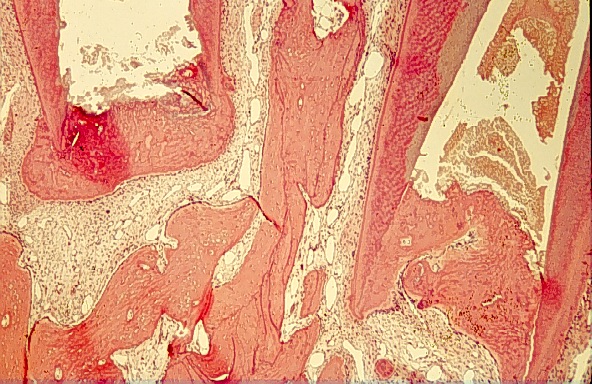Calcium Hydroxide: Stimulation of hard tissue


The process of creating a hard tissue barrier at an open apex or at a grossly overinstrumented apex is termed apexification (Dylewski 1971). Through the use of calcium hydroxide in the long-term treatment of traumatized young permanent incisors, it was learned that when infection was controlled, a barrier of bone/cementum-like tissue was formed with varying degrees of completeness, but with a high degree of predictability (Cvek & Sundström 1974)(Fig. 3). This barrier serves as a mechanical point of compression of the root filling, and any toxic responses of the tissues to the filling materials are minimized by the intervening barrier. While it may not be essential that calcium hydroxide be used as a dressing for this purpose, it has the best and most extensive clinical documentation. - Similar principles apply in the formation of a hard tissue barrier more coronally, e.g., at the fracture line of a broken root or at a pulpotomy wound surface.